In November last year, a good friend and I decided to experiment with a heavy baiting campaign throughout the winter and into the spring of this year. Our motivations for the campaign were three fold, of course the ultimate goal was to catch some carp along the way, but we were also very interested to observe a baited spot develop and excited to monitor a possible increase in fish weights.
We planned to bait heavily with both boilie and particle as frequently as our busy schedules would allow. With the aid of a boat and a Gardner H-Blok we hoped that heavy, accurate baiting would create a concentration of feeding activity that we could take advantage of once spring arrived.
Now I appreciate that on most waters this sort of experiment is simply not an option, however, on a 16-man syndicate where most of the members disappear between September and April, it was an opportunity we couldn’t ignore.
It was late November and armed with a prodding stick, an H-Blok, 12mm Krill boilies and a bucket of particle (so heavy I had to carry it with two hands) Mark and I jumped into the boat in search of a suitable area. The lake is only small at 2 acres and we hoped that we might locate some fish to help us select our spot, however, after a fairly comprehensive search we had nothing to go on.
The lakebed was very silty and we discovered over 2 feet of the black stuff in some areas. We found some firmer areas, where the carp had clearly fed in the past, but this experiment wasn’t about reigniting an old spot. We wanted to start a spot from scratch and where better to start than in the deepest silt we could find.
The H-Blok was dropped and the first hit of bait was spread over the area. We were in 3 1/2 foot of water, above about 18 inches of silt. From the bank, the marker about 50 yards out, with a small dot island to the right and a larger island about 30 yards beyond.
We continued to bait the spot regularly throughout December and January. We even fed them during the January freeze up. I’ll never forget the sound of ice breaking against the hull of our boat echoing around the silent lake. We gave them 20kg of particle and boilie that day and sure enough 2 days later it was completely gone – that was a real eye opener!
Then finally, on a drop at the beginning of February, we were granted the visual confirmation we had been hoping for. As we approached the marker as silently as possible, a miss stroke of the oar hit the side of the boat spooking a big mirror right off the spot. It rose high in the water and bolted across the surface, bow waving as it departed furiously. It was at that moment Mark and I noticed it was not alone, there were at least 6 other fish present. We froze and watched in amazement as the other fish slowly followed the big mirrors lead and departed. They would be back for sure!
We had been fishing a local park lake during the winter and had planned to fish there exclusively until the close on March 15th, but after seeing so many fish on our last visit I couldn’t wait any longer.
By this point the spot was very firm and fairly large (about the size of a bivvy). It was also apparent, when prodding from the boat that although directly around the marker was hard, the lakebed quickly returned to thick silt towards the back of the spot. It seemed that the fish had actually hollowed out the bottom where we had dropped the highest concentration of bait and fed much more tentatively in areas that had perhaps received a lighter dose.
Rig wise I decided to fish hinged stiff rigs, helicopter style. The rigs were tied up using 20lb Gardner Trick-Link for the boom through to a Trip Wire hook section and completed with a size 6 Covert Chod hook, to which I attached Sticky Krill‘White Ones’.
I spliced a large ring onto the end of the Camflex Leadfree and attached the lead via one of our Drop Out Chod clips. I opted to fish 3oz leads at the back or the spot, hoping the lead would sit deep in the silt to further enhance my hook holds.
When I cast out I deliberately over shot the spot with the rig by about 4 feet, and with the rod tip high I could feel the lead had plunged into the silt; well and truly plugged. Adjusting my line lay with the rod held high I was confident that the rig had dropped perfectly into the hollowed out area. I repeated the same process with the right hand rod and sat down anticipating quick action.
I didn’t have long to wait; it must have only been 45 minutes before a bizarre take occurred. My left alarm let out an abrupt tone and my Bug rose to the blank and then everything stopped. As I lifted into the fish it was absolutely solid, I took a few steps back, reeled down and applied enough pressure to pop the lead off the Drop Out Chod Clip.
I was now in direct contact with the fish and it was absolutely furious! The fish took line until it hit the surface about 20 yards beyond the marker and then it decided to kite right and come into the near margin. After a very sketchy and splashy margin battle, I slipped the net under a thickset mirror.
I was ecstatic to have caught off the spot so quickly and even more thrilled that the fish went 31lb 4oz on the scales. I called Mark to tell him the news and sweet-talk him into coming over to do some photographs.
By the time Mark arrived an hour or so later, I had two more fish lined up in retainers. Another mirror of 27lb 2oz and a beautiful mid double fully scaled. After ten minutes talking at him about what had just happened (I was rather excited), we began photographing the fish. As I held the little fully aloft for the camera the left hand rod was away again. The bite was exactly the same as the first, it seemed the fish simply couldn’t deal with the leads stuck in the silt.
I quickly slipped the fully back whilst Mark lifted into the fish; he gave me a very satisfied look as the Drop Out Clip performed perfectly for the fourth time that day. He passed the rod over like a true gent and I played in the fourth fish off the spot, another beautiful mirror of 23lb.
As you can imagine, I am now an absolute believer in not just heavy pre baiting but also continuing to use bait throughout the colder months. Watching the lakebed change dramatically as a result of feeding activity was all the confirmation I needed. I firmly believe those fish we’d seen on that February afternoon probably fed on that spot almost every day during the 3 months we had been baiting!
We are still baiting the spot regularly. I guess its Marks turn next!


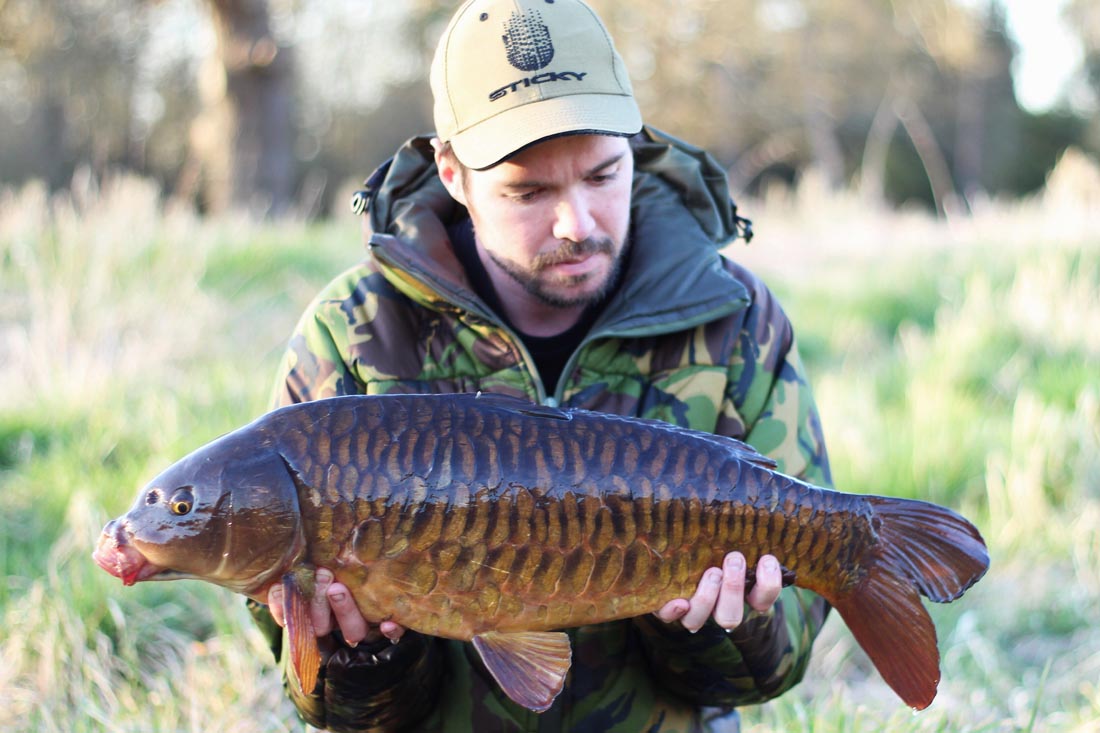
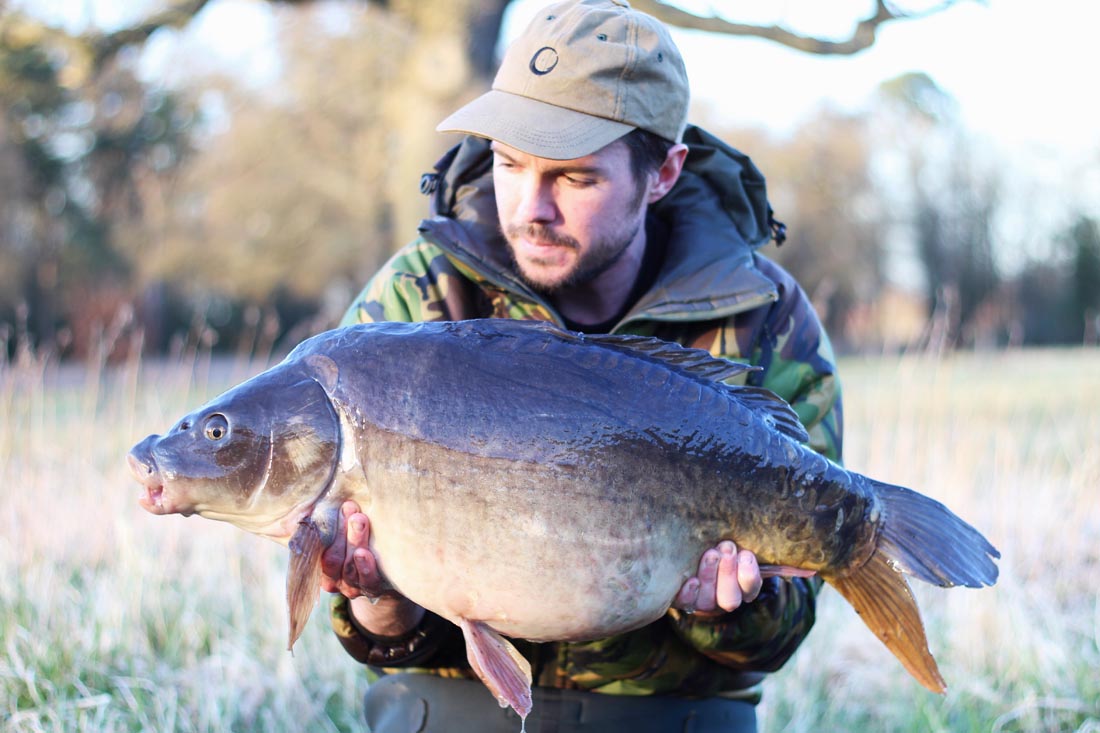
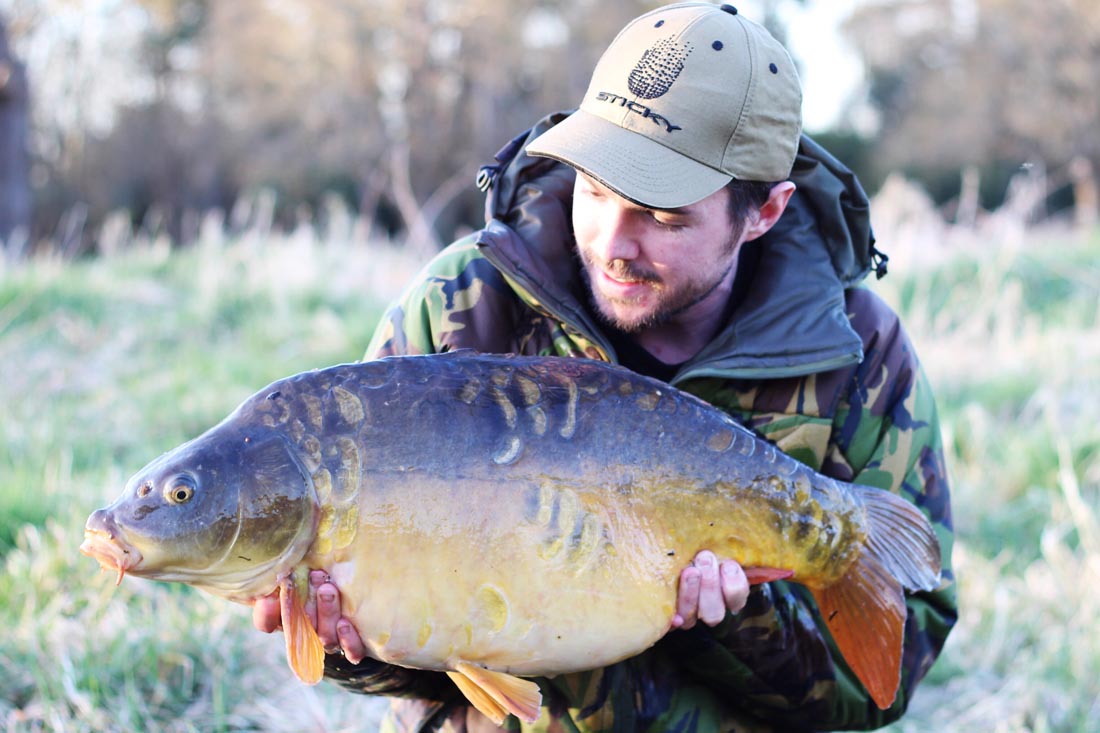

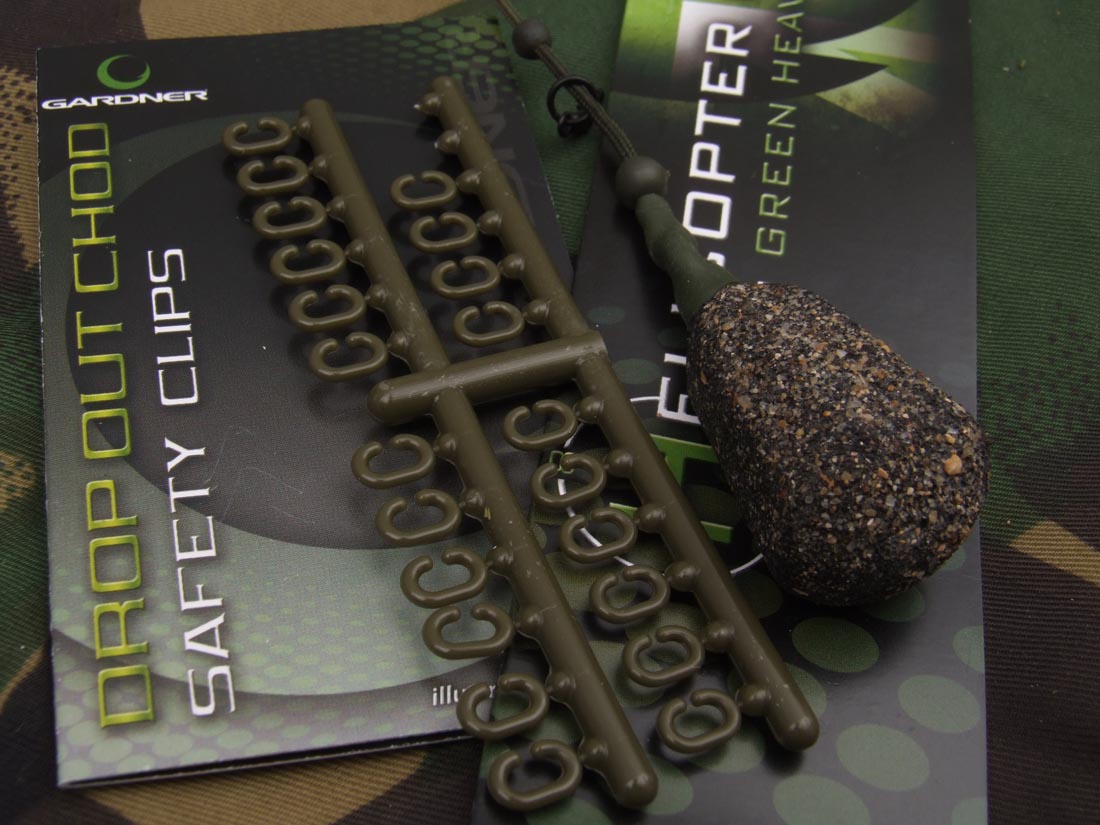
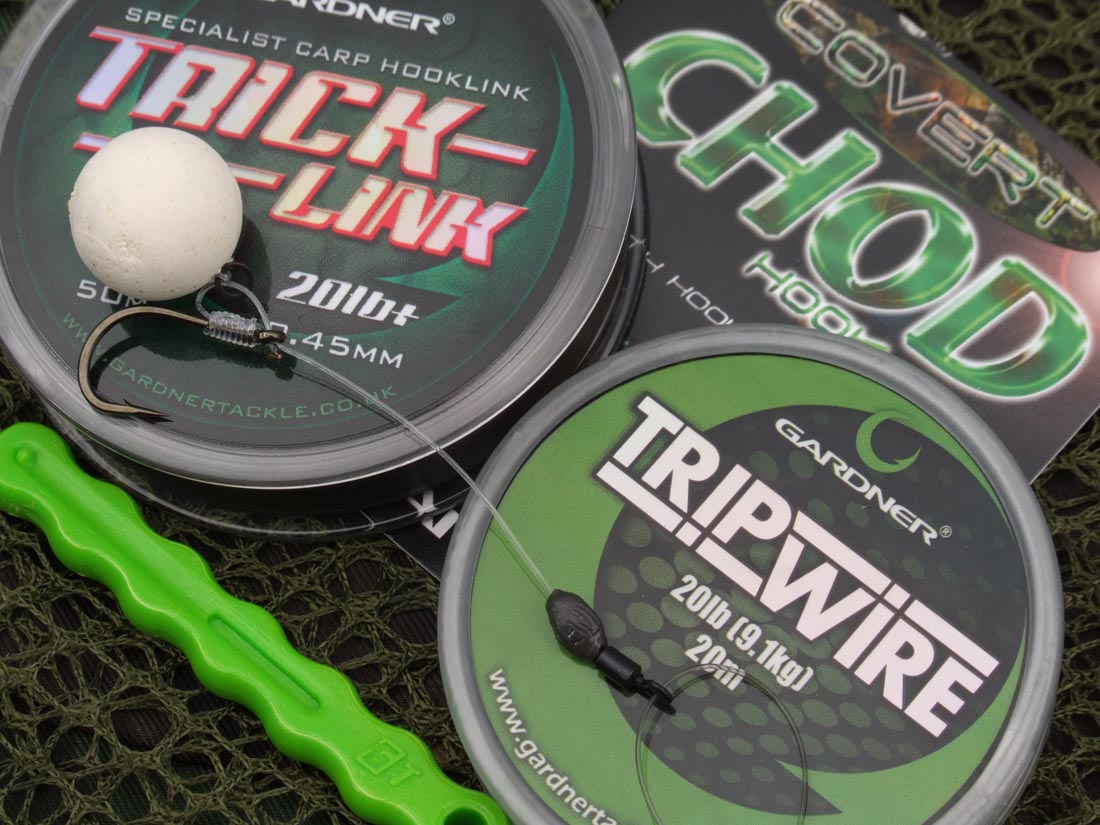
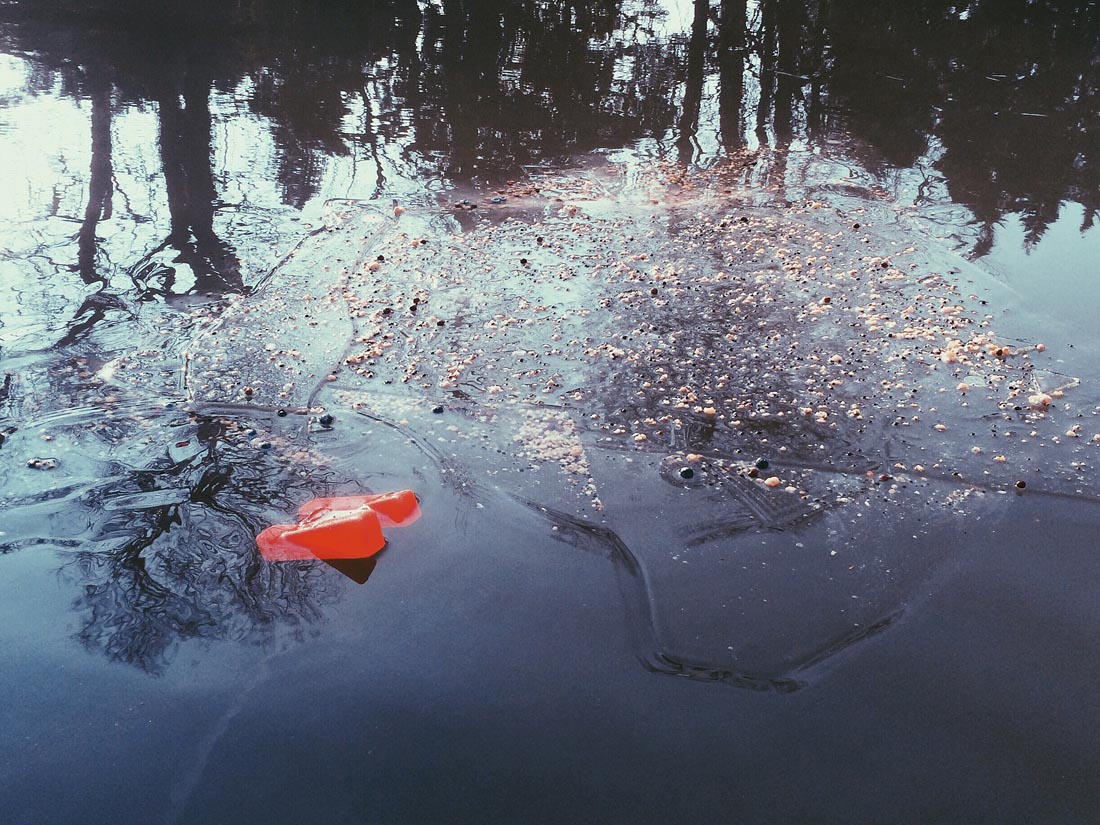

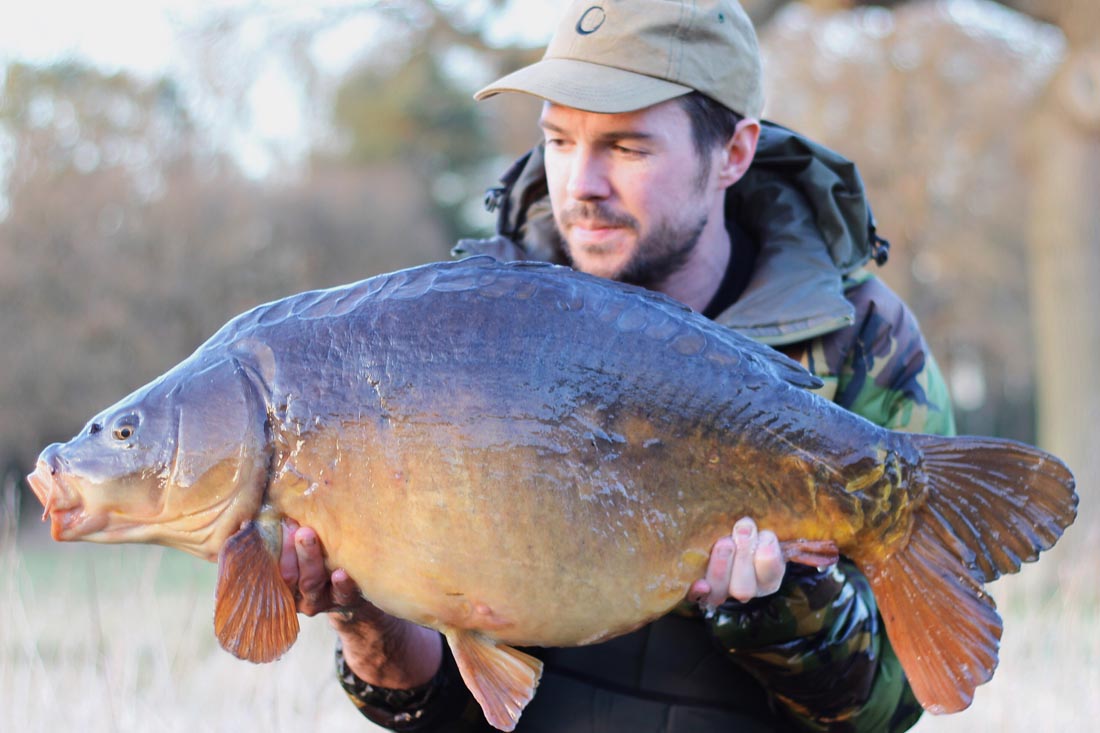
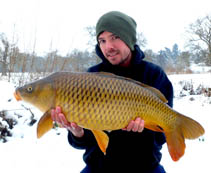
Leave A Comment